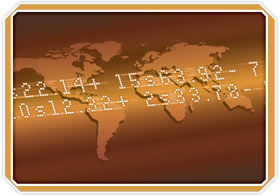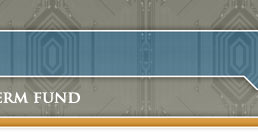 |
The LTF posted a net investment return of 11.06% for the year ended August 31, 2006. The LTF derives its return mainly from the shares it owns in the GEF. The LTF’s return is slightly less than the GEF’s return due to additional expenses incurred by the LTF. The GEF posted a net investment return of 11.10%. All asset categories of the GEF posted positive returns for the year, with the exception of commodities. The REITs (+27.9%), private market (+21.8%), and emerging markets equity (+21.8%) asset categories led the strong relative and absolute returns across the overall portfolio.
In last year’s Annual Report, the market environment for Fiscal Year 2005 was summarized as “Much Ado About Nothing”. In keeping with the Shakespearean reference, fiscal year 2006 can be described as “All’s Well That Ends Well”. During the year, the financial markets experienced:
- The end of the U.S. Federal Reserve tightening cycle, which lasted 17 rate increases totaling 425 bps (4.25%) with the initial Fed pause in August 2006,
- Oil prices advancing to an all-time high of $77/barrel, with a trough-to-peak move of +37% during the year,
- Dramatic declines in new home sales and housing starts, and
- Continuing geopolitical turmoil (Iraq, Afghanistan, North Korea, etc.).
However, as the chapter is closed on another fiscal year, the performance results are reflective of a marketplace with a high degree of complacency related to these significant economic and political events. The S&P 500 Index appreciated by 8.9%, below its long term average of 10.4%, but a respectable return nonetheless. The Russell Mid and Small Cap indices were up over 9% each, their first single digit positive return results over the past five years (on an annualized basis), but once again, not a trivial result. Overseas, international equity markets surged ahead with developed international markets and emerging markets rising by 24.3% and 30.6%, respectively. Emerging Markets have now extended their run of 30% or greater annualized returns to four consecutive years. REITs, which historically have shown sensitivity to a rising interest rates environment, nevertheless plowed higher, increasing by 26.3% during the fiscal year - extending their five year annualized return to in excess of 20%.
|
The global equity markets results were as strong as optimistic bull market pundits could
have expected given the events during the year. “Risk” in the marketplace, as measured by the VIX Index (a volatility measure), declined to a level of 12 points, 45% lower than its 10 year average of 22 points. As equity markets move higher, volatility falls as market participants become more comfortable and more optimistic of the current economic environment and are willing to take on increasing levels of risk.
|
|
 |
The risk-taking appetite can also be seen in the fixed income markets. The Lehman Brothers Aggregate Bond Index returned 1.7%; quite understandable given the rising interest rates environment since the value of bonds decreases as interest rates rise. However, high-yield and emerging market debt securities, which typically weaken as monetary conditions tighten, returned 7.9% and 9.0%, respectively.
Market performance over the course of the fiscal year can be evaluated by the significant changes to the price of oil. During the course of the year, the price of oil made higher highs on advances - and higher lows during declines, as complacency continued to grow in the energy marketplace.
 |
|
The fiscal year began with the price of oil at a then all-time high of nearly $70/barrel and immediately reversed course falling to $56/barrel by mid-November. Investors pushed equity markets to calendar year highs as the welcome relief in energy prices would benefit corporate earnings and enable the continued advancement of global growth prospects. Market participants used the bearish short term news of strong oil and gas inventory injections, oil executives testifying in front of Congress on record profits, warmer than normal weather conditions in the U.S. and Europe, and concerns regarding slowing growth in Chinese energy demand as reasons to lock in profits for the year.
|
By the end of January 2006 the price per barrel of oil increased back to $70 as energy prices reversed course, and disruptions raised supply concerns while demand destruction had not become evident despite historically high prices. Equity markets, during this seasonally strong period, remained flat as investors supported equity prices, showing little concern over the cost of energy.
Oil then fell to $58/barrel by mid-February, down over $10/barrel in less than two weeks. Investors again rejoiced over lower energy prices, pushing equity markets again higher. However, falling energy prices were very short-lived, bottoming at $58/barrel and advancing to over $77/barrel by August 2006. Equity markets remained flattish during oil’s initial run to $70/barrel but then fell precipitously (erasing all calendar year-to-date gains and more) in June 2006. Equity markets, however, were resilient, and were able to turn around despite oil at $70+/barrel as the economic data showed a very supportive economy even as the Fed continued to hike interest rates.
Throughout the course of this advance and retreat of energy prices during the fiscal year, investors found opportunities in higher risk assets such as small cap equities, emerging markets and energy-related stocks.
In review of fiscal year 2006, when most investors reflect on the performance results posted by the financial markets, they are likely to conclude that “All’s Well That Ends Well” with positive results earned by asset classes and exceptional results from emerging market equities, non U.S. developed international equities and REITs. For the GEF, the year was challenging as the portfolio was positioned defensively in anticipation for volatility to return to the financial system, but rewarding as the GEF obtained its fourth consecutive year of double digit results. However, only time will tell if all is really well for the global economy.
The marketable endowment assets earned a return of 9.9% - slightly below the benchmark result of 10.2%. Private market investments posted a double digit return of 21.8% during the year, which under performed their benchmark of 26.2%.
Figure D reports the GEF’s investment results by asset class compared to each individual benchmark for the year ended August 31, 2006.
|

























